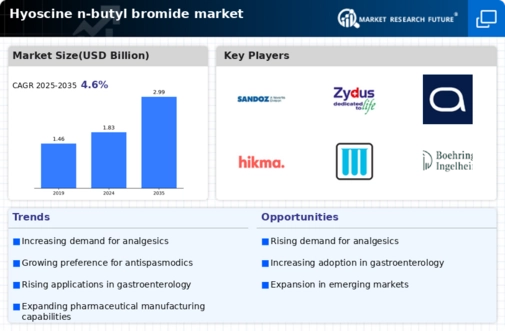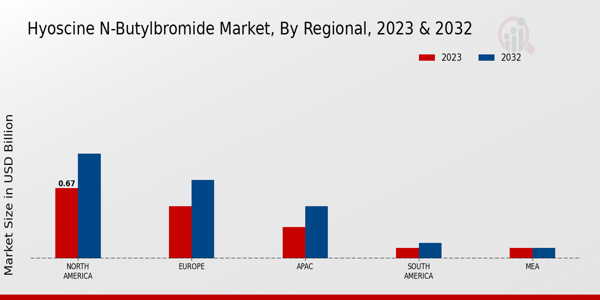The Hyoscine n-butyl bromide Market is characterized by a dynamic competitive landscape driven by multiple factors, including increasing demand for effective treatments for gastrointestinal disorders and a growing focus on patient-centered care.
The market is influenced by various players who seek to capture market share through innovation, strategic partnerships, and aggressive marketing strategies. The competition is not only among established companies but also includes emerging firms that are entering the market with unique formulations and delivery mechanisms.
As companies strive to enhance their product portfolios and expand their geographic reach, competition intensifies, resulting in price wars and enhancements in product quality. The regulatory framework also plays a crucial role, as players must navigate complex approval processes while ensuring compliance with safety standards.
Consequently, companies are compelled to invest in research and development to stay ahead of the competition while also being responsive to market needs and changing healthcare policies. Sandoz has established a noteworthy presence in the Hyoscine n-butyl bromide Market through its commitment to delivering high-quality generic medications.
The company boasts several strengths that position it favorably within this competitive environment. Sandoz leverages its extensive experience in pharmaceutical manufacturing, ensuring that its Hyoscine n-butyl bromide formulations meet rigorous quality standards.
The company benefits from a broad portfolio and robust supply chain capabilities, allowing it to maintain consistent product availability across various regions. Additionally, Sandoz's strong brand equity and reputation for reliability enable it to command a loyal customer base in an increasingly crowded market.
Its global footprint facilitates the distribution of its products more effectively, helping to respond promptly to market demands while simultaneously managing regulatory challenges in different countries. Sandoz's strategic approach to developing and marketing Hyoscine n-butyl bromide underlines its competitive advantage in this domain.
Reddy's Laboratories also plays a significant role in the Hyoscine n-butyl bromide Market, showcasing a portfolio that emphasizes accessibility and affordability in healthcare. The company's strengths lie in its established reputation as a reliable pharmaceutical manufacturer with a focus on quality and compliance.
Reddy's Laboratories has successfully integrated advanced technologies and production practices, allowing for the efficient manufacture of Hyoscine n-butyl bromide, which meets both efficacy and safety standards.
The company's ability to invest in research and development fosters innovation within its product offerings, helping to differentiate its Hyoscine n-butyl bromide in a competitive market. Furthermore, Reddy's Laboratories benefits from a strong distribution network that enables it to penetrate various international markets effectively, keeping pace with demand fluctuations.
This strategic positioning, coupled with a commitment to high-quality standards, enables Reddy's Laboratories to effectively compete in the global landscape of Hyoscine n-butyl bromide, catering to the growing needs of healthcare providers and patients alike.























